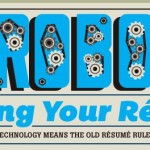All items in a list need to be in the same format; this is called parallel construction.
Parallelism occurs in several ways. First, within a single sentence, a list should start with the same verb form. For example, the following sentence is not parallel: I am good at working in teams, being able to communicate, lack fear, having a positive attitude. The verbs are: working, being, lack, having. To be parallel, the verbs need to be: working, communicating, lacking, having. Here’s another example:
Not parallel:
Some personal values that are important to me in my career are:
- Making a lot of money to support my family
- Being able to enjoy my field of work
- Managing a new business
- Making a new business succeed
- Become recognized as a major business in the country
Here the verbs are: making, being, managing, and become. To be parallel, the verbs need to be: making, being, managing, and becoming.
Parallel:
Some personal values that are important to me in my career are:
- Making a lot of money to support my family
- Being able to enjoy my field of work
- Managing a new business
- Making a new business succeed
- Becoming recognized as a major business in the country
Not parallel:
- Participated in meetings
- Strengthened interpersonal skills
o Word, Excel, PowerPoint
Parallel:
- Participated in meetings
- Strengthened interpersonal skills
o Developed skills in Word, Excel, PowerPoint
In the next pair, the structure of the listed items requires parallel construction. All items need to be either phrases or complete sentences, not some of each.
Not Parallel:
Values that I feel are important for me to have in my work and career are:
- Team working skills
- Being able to communicate with others
- Not being afraid to say my ideas
- I should not judge people.
- Have a positive attitude
In this list, item number four is a complete sentence while the others are not. The following is parallel.
Parallel:
Values that I feel are important for me to have in my work and career are:
- Team working skills
- Being able to communicate with others
- Not being afraid to say my ideas
- Not judging people.
- Have a positive attitude


















